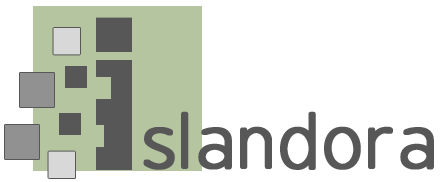At the University of Toronto there are more than 84,000 students, over 6,000 faculty, and 44 libraries – including large campus libraries at the western campus in Mississauga and eastern campus in Scarborough. About 141 librarians support this system and 1 central library IT department, the University of Toronto Libraries Information Technology Services (UTL ITS) department, provides information technology services. Over the past few years, there has been an increase in requests to UTL ITS – from faculty, librarians, archivists, and other collaborators – for support to build digital collections.
To meet the growing demand for digital collection support, UTL ITS created an Islandora multi-site environment called Collections U of T. What “multi-site” means is that Collections U of T has one back-end Fedora repository that preserves all of the digital objects within each collection, one “parent” Collections U of T site that enables access to all collections, and multiple “children” sites to display and provide access to specific collections and projects per site. The original intent behind Collections U of T was to provide a “DIY” self service for library and archives departments, faculty, and other collaborators across the university to build and preserve digital collections. The goal of the multi-site environment was to de-silo digital collections and enable searching across collections. Collections U of T could then provide both a central place to create and manage collections and also a central place for users to discover digital content from U of T.
Over the past two years, ITS has taken on a number of pilot projects to host in Collections U of T. Through these pilot projects, much has been learned about developing and maintaining a multi-site Islandora instance. Examples of these lessons learned can be demonstrated through three sites have been officially launched within the Collections U of T multi-site environment: Canadian Necrology, Project for the Study of Dissidence and Samizdat, and French Renaissance Paleography.
First, Islandora’s Drupal front-end provides a navigable user interface for site administration. This means that Collections U of T collaborators – the faculty, librarians, and project partners working alongside UTL ITS on Collections U of T – can manage their own site and Islandora digital objects through the Drupal interface. Collaborators can change the look and feel of their site, configure the display of metadata, manage user settings, and much more. Great success was had with each of the sites mentioned above by enabling collaborators to make use of Drupal and Islandora configuration possibilities. Site-specific documentation was created and introductory Drupal and Islandora training was provided. However, site managers did need to invest a significant amount of time to climb the steep learning curve of Drupal and Islandora configuration. Islandora will not be a “DIY” solution for everyone. UTL ITS provides varying levels of site administration support based on the needs of each Collections U of T collaborator. Additionally, Islandora instances require the time of network services and developer staff to maintain the platform and keep it up-to-date. This means that the Collections U of T service will never be a one hundred percent “DIY” solution for supporting the creation of digital collections. Ongoing site administration support and maintenance resources must be considered whenever taking on new Collections U of T projects.
Second, the modularity of Islandora has been essential to meet the needs of many digital projects within Collections U of T. For example, one of the goals of the French Renaissance Paleography site was to make use of the Mirador manuscript viewer. UTL ITS developers were able to achieve this goal by extending the Islandora Book Object Solution Pack to allow users to view Islandora book objects in the Islandora Mirador Book Reader viewer. The Islandora Mirador Book Reader viewer allows for side-by-side comparison of manuscripts within the site, along with the ability to rotate and modify images. The possibility to make this type of customization is one of the major benefits of working with an open source platform like Islandora. However, with each act of customizing an open source platform there needs to be a concurrent consideration of the technical debt that the customization will create. That is, each customization will require long term maintenance as well as staff time to potentially share and contribute code back to the platform’s community. This should not be a deterrent for making customizations, but for UTL ITS it means that customizations must be carefully considered when planning for the long term sustainability of each Collections U of T multi-site and resources allocated to community contributions. More generally, institutions considering Islandora as a platform will need to assess what customizations, if any, will be needed when adopting the platform, as well as the level of community engagement that they can commit to.
Finally, Islandora out-of-the-box has great preservation and access workflows that made it the ideal digital collection platform for UTL ITS when it was initially selected. However, some multi-sites have recently experienced slow digital object load times as well as occasional errors while ingesting objects. These issues required UTL ITS to assess the scalability of an Islandora multi-site environment. UTL ITS began this assessment by investigating possibilities for improving Islandora performance through our server architecture. UTL ITS is currently making improvements such as load balancing with Nginx for ssl termination, Varnish Cache, and creating a clustered server architecture to improve the performance of Collections U of T.
Through these lessons learned UTL ITS has gained a better understanding of Islandora’s benefits as well as its limitations, allowing us to improve the strategies that we develop to meet our community’s needs for building digital collections.
[from the article Using Islandora to Build Digital Collections]